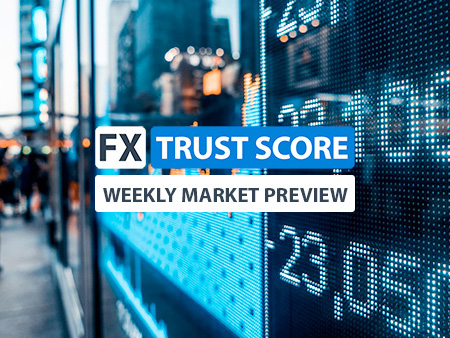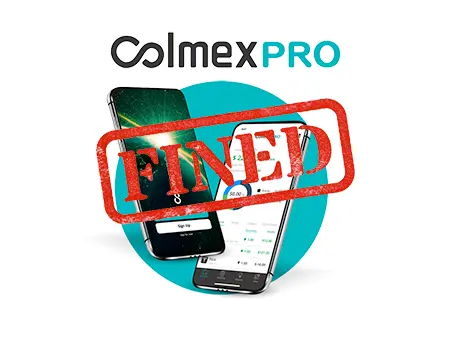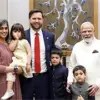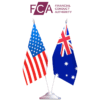Assessing the potential market impact of US vice-president JD Vance’s positive Delhi meeting with Indian prime minister Narendra Modi during his four-day personal visit to the country.
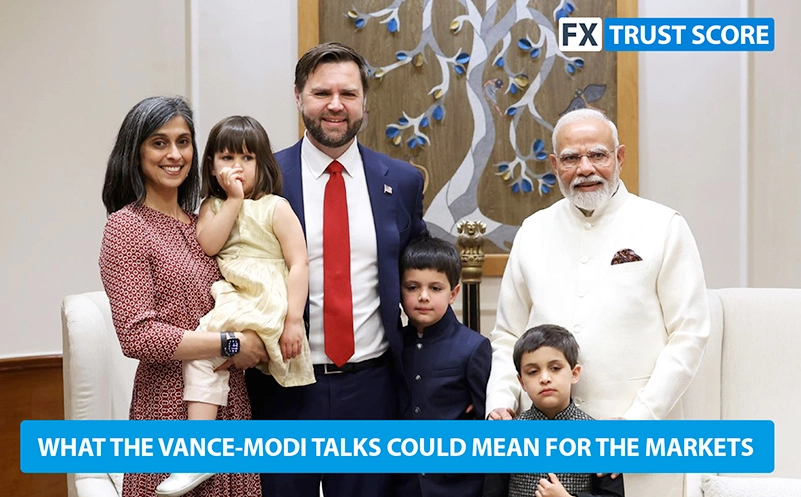
US vice-president JD Vance met with India’s prime minister Narendra Modi on Tuesday, where they discussed advancing a bilateral trade agreement between the two countries. The meeting in Delhi formed a part of Vance’s four-day trip with family, including wife Usha Vance, whose parents first migrated to the US from the southern Indian state of Andhra Pradesh.
Vance’s personal visit to India comes amid growing trade tensions between the US and many countries around the world after Trump announced steep tariffs on them. India was not spared from reciprocal action, briefly receiving a 27% tariff before the US temporarily paused it on 9 April.
Following the positive meeting between the two sides, taking place against the backdrop of strained international trade relations with the US, we’ve highlighted three key takeaways for traders:
1. Progress on trade and tariffs
Vance and Modi held productive trade talks in Delhi, with India hoping to strike an early deal with Washington to exempt the country from Trump’s additional tariff hikes. White House officials confirmed that the talks yielded “significant progress in the negotiations” for a bilateral trade agreement. It is also believed that the two sides finalised an action plan for a possible deal to reduce the future tariff burden.
2. Strengthening of US-India relations
Prior to the meeting, the Trump administration had named India as one of several countries the US is prioritising negotiations with during the pause in tariffs, with high hopes for a quick agreement. The country aims to attract and encourage US companies such as Tesla to relocate their manufacturing from China, building on Vance’s anti-China stance. Enhanced US-India ties could shift the dynamics of global trade, while affecting market sentiments and investment flows.
3. Defence and technology market growth
The discussions between Vance and Modi also involved defence cooperation and strategic technology partnerships. India is open to purchasing US military equipment, while reducing tariffs on American goods presents various market opportunities in terms of defence and technology. Online traders might find prospects in stocks related to these sectors, anticipating increased demand and collaboration.
How is the trade relationship between the US and India?
India is in a strong position when it comes to the balance of trade, enjoying a $45 billion trade surplus with the US, with exports much higher than imports. The country has already reduced the tariffs charged on certain US goods. With India’s average tariffs at 12% and the US at 2%, further reductions are likely.
Until recently, the US was India’s largest trading partner, with bilateral trade reaching $190 billion. In fact, Narendra Modi was among the first global leaders to meet with Trump after his inauguration. The Indian prime minister had hailed a “mega partnership” between the countries following his meeting with the president.
The two leaders jointly set an ambitious target to more than double bilateral trade to $500 billion, while announcing a deal for India to increase US imports of oil and gas. Shortly after, Tulsi Gabbard, US director of national intelligence visited India, followed by a US delegation led by Brendan Lynch, assistant trade representative for South and Central Asia.
In terms of timing, Vance’s India tour is viewed as significant, especially as Trump is not expected to visit the country until later this year for the Quad summit, which will also feature the leaders of Australia and Japan.
Enjoyed reading this article? If you are a US-based trader looking for a reputable brokerage to open an account with, check out our expert guide to the top five Best Forex Brokers in the US for 2025.
